Last week I received a reminder that it’s time to repot the pines in my garden.
Strong winds had knocked over a young exposed root pine revealing lots of new roots.

Broken pot
My favorite time to repot pines is after the roots start growing but before the buds begin to open so the timing couldn’t have been better.
Here’s a close-up of the new roots.
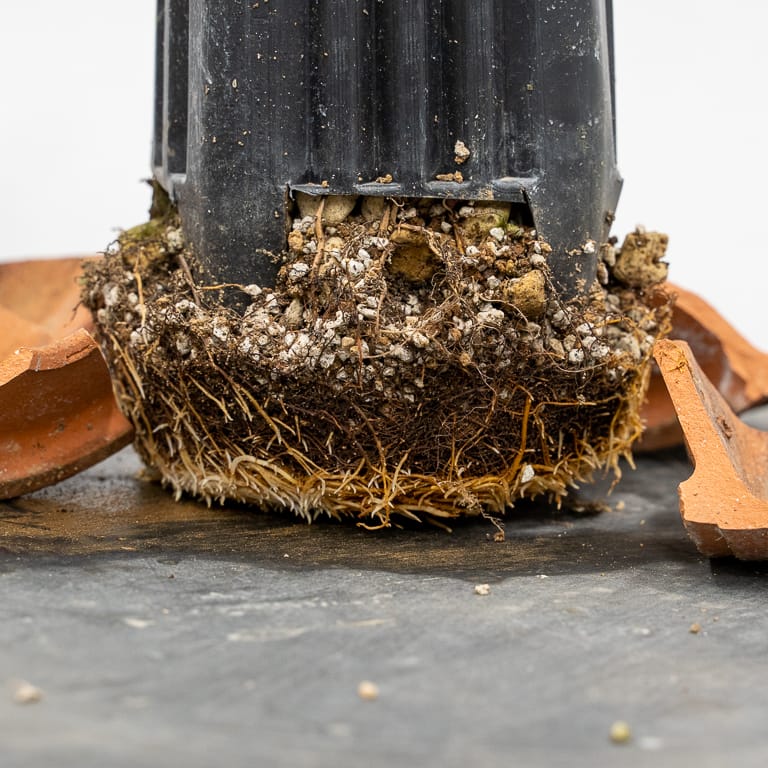
White and yellow roots indicate recent root growth
The first step was removing the mat of roots at the bottom of the rootball.
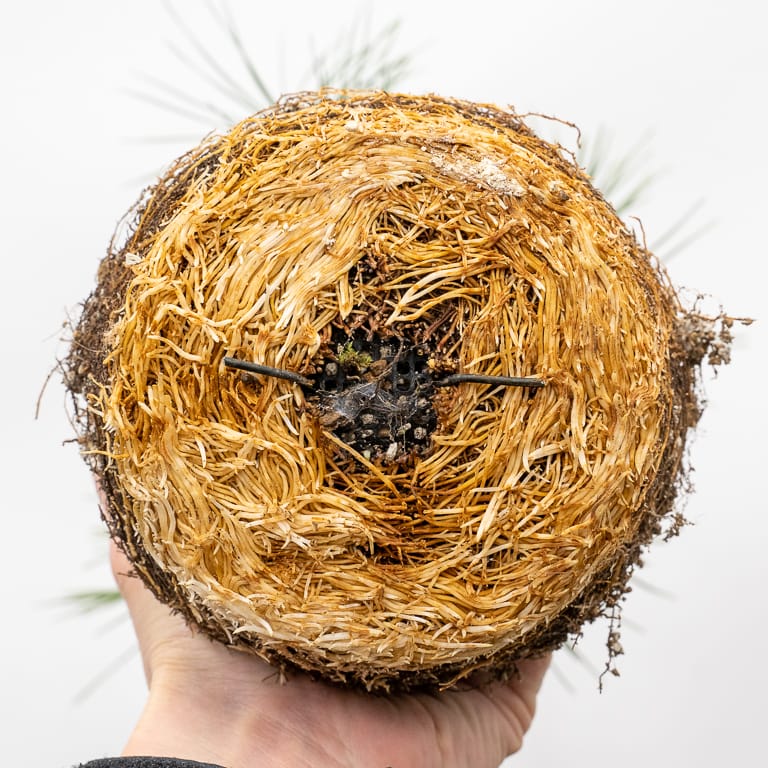
Mat of circling roots
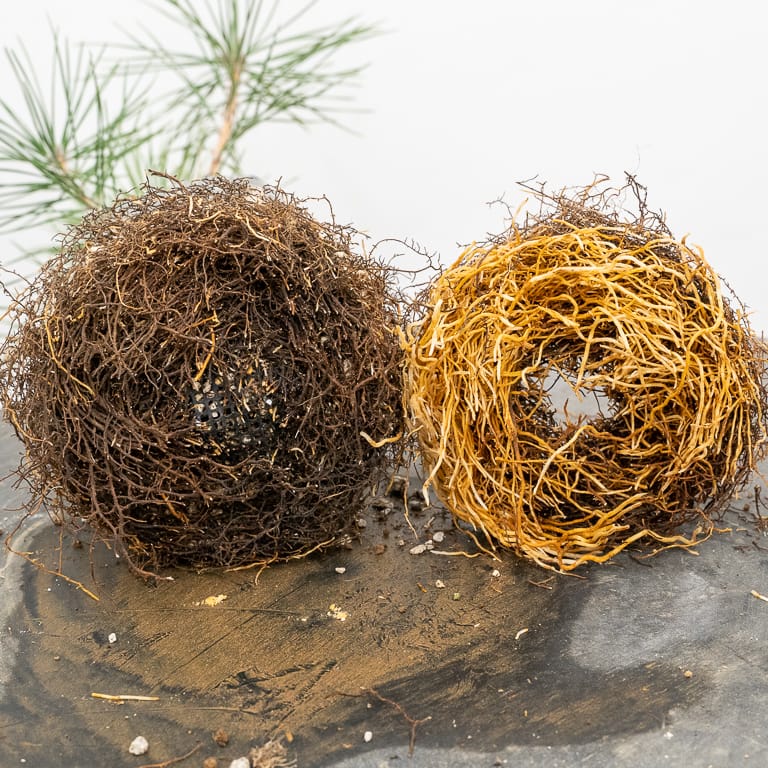
After removing the new roots
I pulled away all of the circling roots until I could see bonsai soil peeking through between the roots.
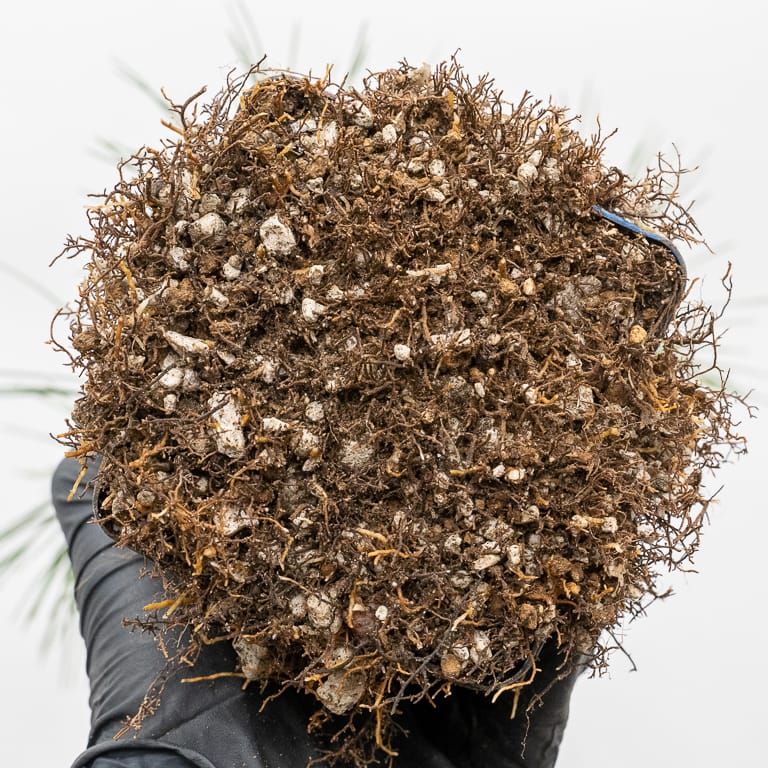
Root-work complete
I used a slightly larger pot to better stabilize the tree, but I’ll need a larger pot before long as young pines grow quickly.
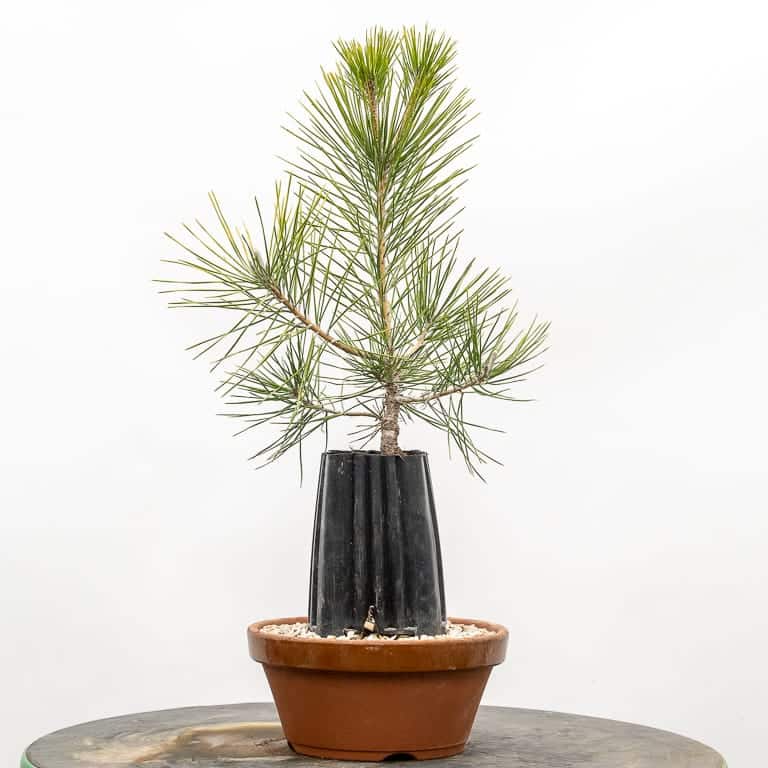
After repotting
As this was a good time for adding curves to the trunk, I applied some heavy aluminum wire and made some bends.
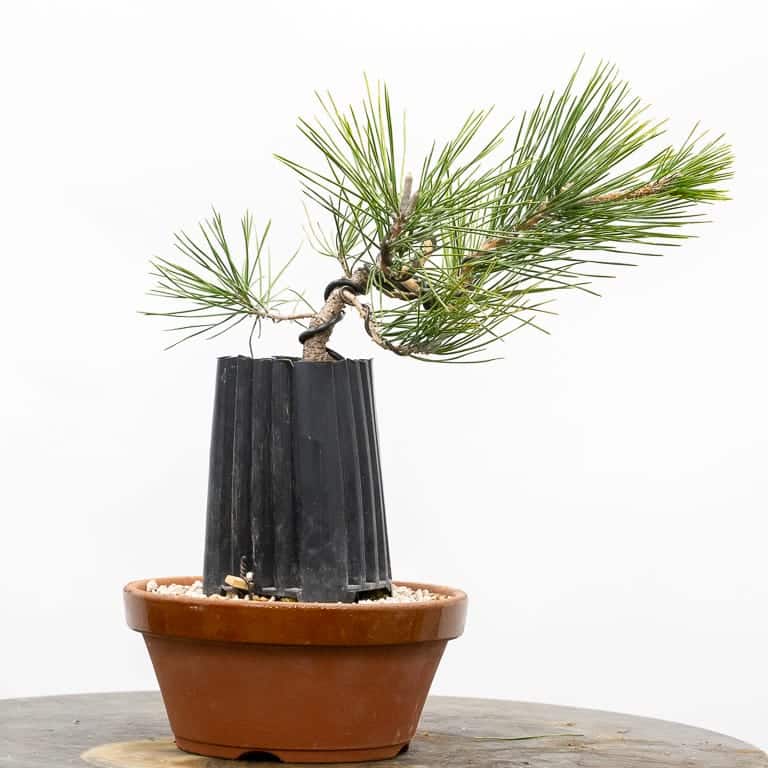
After wiring – 12″
That’s all the work the tree will need for a while. I plan to let it grow freely until fall at which point I may wire some of the new branches.
Subscribe to Bonsai Tonight
New Posts Delivered Every Tuesday and Friday
Vance Hanna says
Jonas,
I love the little tree and your treatment of it!
Are the exposed roots “sheltered”in the black corrugated plastic shell above?
Jonas Dupuich says
Hi Vance! Yes, the roots that in the future will be exposed are developing in the plastic cylinder. Once they thicken, I’ll reduce the container and expose the roots to the sun.
Jesse Strong says
Coming along beautifully! What is that you’ve utilized for the root ‘tunnel’? I’ve tried many things, most end up being a battle to shorten or remove because the roots get stuck. I like this because the vertical notches make for fairly easy removal when the time comes. Thanks for all your help!
Jonas Dupuich says
Thanks, Jesse! This is an upside-down nursery container. Blueberries and young fruit trees often come in tall, narrow containers. Checking with a local nursery may turn up a few.
Doug Zeeff says
Jonas, I have two questions
1. How long will you leave the wire on?
2. What is your average night time low right now?
Thanks for another great lesson.
Jonas Dupuich says
Hi Doug! I’ll leave the wire on until it begins to cut in. This could be 6-12 months from now depending on how quickly the tree grows this year. As for the temperature, the lows generally stay above freezing where I live. I’d wait until later in the season to wire if the temps were lower.
Paul says
Amazing photos Jonas. It looks like you didn’t manipulate the roots that you plan to expose later. How frequently will you look at those roots and adjust them? Every other year? Only after multiple years once they are large enough to hold a shape?
Jonas Dupuich says
Thanks, Paul! Good question about the future exposed roots. I usually don’t manipulate the roots while they’re developing and simply find out what’s they look like when it’s time to expose them.
I have, on occasion, manipulated them, but this slows development so I generally leave them alone at this stage.
Jeff says
Hi Jonas,
Great to see your method on repotting exposed root pines.
Do you think there would be any benefit to having the tall container made from a material like a colander (i.e. with holes), or do you think a solid, non porous material is more beneficial for developing the future exposed roots?
I’m planning on developing some of my seedlings this way and am wondering about the best method. Many thanks!
Jonas Dupuich says
Great question Jeff! I’ve been leaning toward wider solid plastic containers or mesh, colander-like material. I’ll be starting a lot with drainage mesh as the siding this year.
The only thing I don’t like about solid sided containers is that sometimes the roots grow straight along the sides down into the soil. I’m curious to see if the mesh sides prevent that.
Vance hanna says
Jonas thanks for you expertise!
I have two questions regarding repot and air layer.
1) repot: have an old ulmis carassifolia that needs repotting… I usually wait till the buds are just about to burst open ( probably another 3 weeks). It is very healthy and buds have move d a tad and j wound I’ll be busy with other stuff then do you think I can safely do it now?
2) air layer for JBP and also a shimpaku. :when? I live over in the valley (Merced)
Thanks
Vance hanna
Jonas Dupuich says
1) I think you’re fine to repot the ume any time now within the next three weeks.
2) I’ve never layered pines (I’ve seen it work with 3-5 year-old branches), but the standard time is May. I’d treat juniper the same though they might work when started anytime.
Leonard Bell says
Jonas thanks for another instructional piece. I have a question about the upper exposed roots. Do you periodically inspect them and maybe trim the unwanted ones out during development?
Jonas Dupuich says
Thanks, Leonard! In general I don’t inspect the roots – I just wait to see what I get. I’ve done it on occasion but find it slows development (thickening) of the roots.
Robert says
Jonas, I know I’ve seen you mention this before in your posts but what size wire are you using for this age pine again? I have some two and three yr olds around this size that I’ve forgotten to wire in the previous years and they are pretty straight and stiff.
Jonas Dupuich says
Hi Robert! I use aluminum sizes 3.0-5.5 or copper up to 8 gauge for trees at this stage of development. When they grow quickly and thicken a lot I use the heavier wires, but most trees get 3.5-4.0 at this age.
Victor Taboada says
Always great post Jonas!
I have a quick question. Given the shortage of akadama these days, have you experimented/recommend a substitute to akadama? I am looking into diatomaceous earth, like the NAPA 8822 floor-dry product, but I am unsure about it.
Thank you!
Jonas Dupuich says
Great question – I’ve done a lot of experimenting and haven’t found good replacements. There are, however, good alternatives. Volcanic soils like pumice and scoria can be mixed with bark or mulch or used on their own (I’m using 100% scoria for a lot of young trees this year). I haven’t used diatomaceous earth, but I’ve heard that it’s not a bad ingredient for mixes.
In general, I like pumice and/or lava mixed with akadama for refined trees but a broad range of soils can work for young trees.
Victor Taboada says
Thank you so much Jonas! After posting my comment I saw an interesting article on this subject by Michael Hagedorn; he also favors pumice instead of DE: https://crataegus.com/2013/11/24/life-without-turface/
Thank you again for your guidance and expertise!
Jonas Dupuich says
I agree with that – thanks for sharing the link!